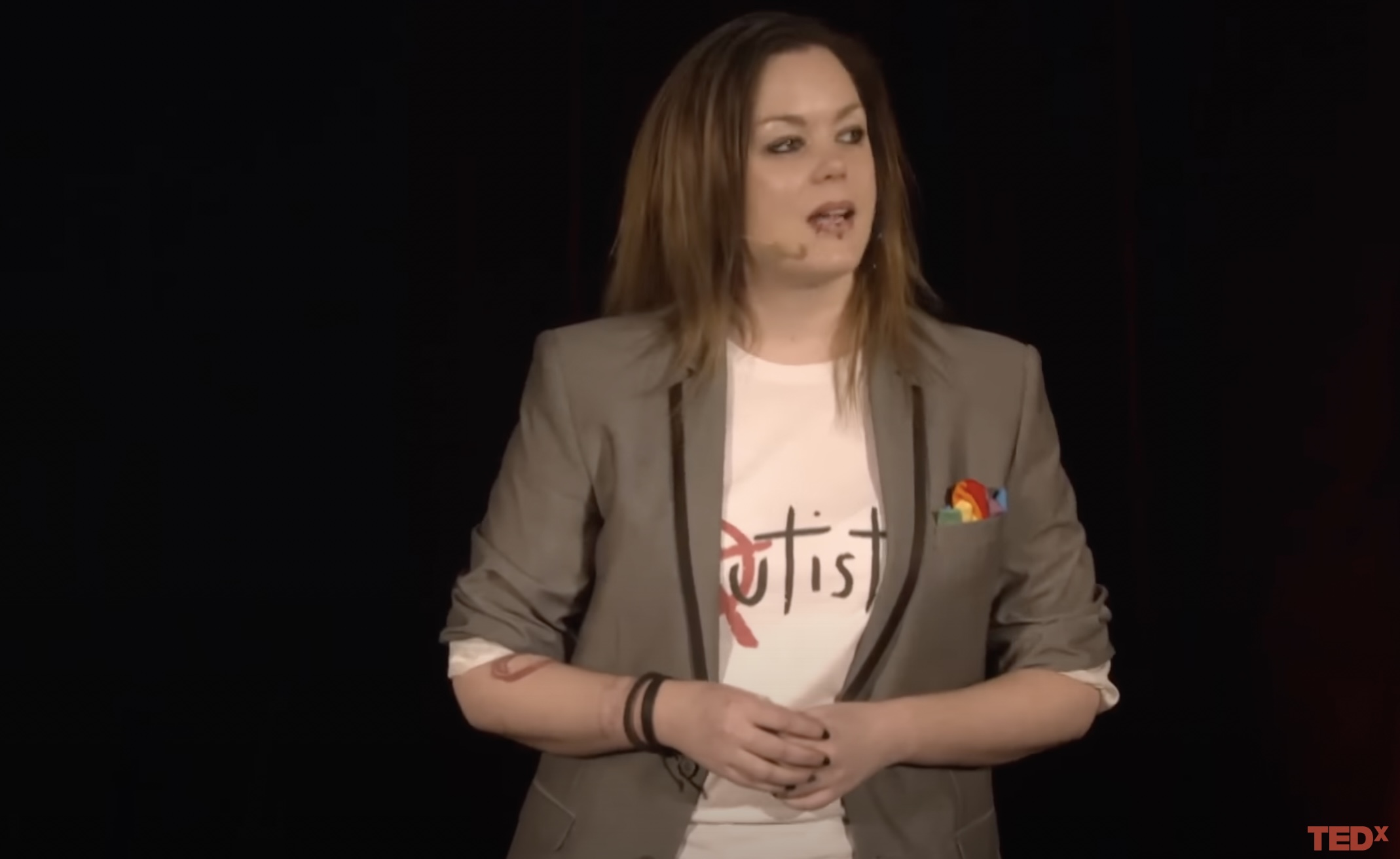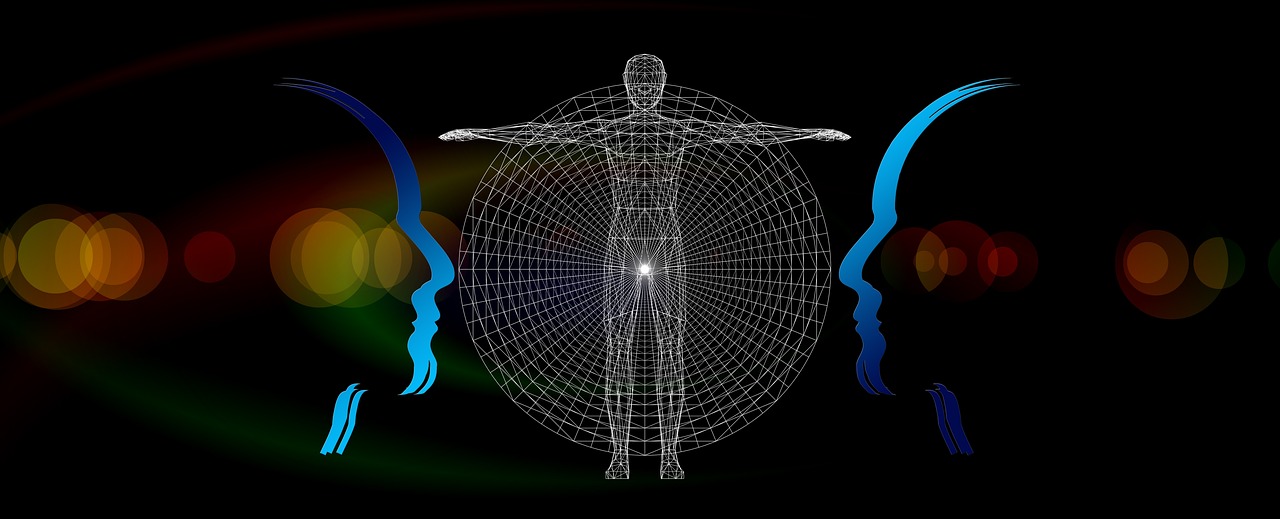Der Artikel wurde am 15.02.2023 aktuallisiert oder erweitert.
Der nachfolgende Text ist von einer Rede, die Jac den Houting im Rahmen des TED Forum gehalten hat. Ich möchte wirklich jeden darum bitten, diesen Text (Transcript) zu lesen. Diese Rede machte sehr eindrücklich klar, warum ein Paradigmen-Wechsel zum Thema Autismus zwingend notwendig ist. Aktuell ist das Transcript nur im englischen Original. Die deutsche Übersetzung ist gerade in Klärung und kommt noch.
Speech: Jac den Houting @ TEDx @MacquarieUniversity
Topic: Why everything you know about autism is wrong
Transcriber: Theresa Ranft, Reviewer: David DeRuwe (thank you)

We know that the Earth is round. Everything we understand about this planet is grounded in the fundamental assumption that the Earth is round. But there was a time, not all that long ago, when we knew that the Earth was flat.
That’s called a paradigm shift. Our basic assumptions about the Earth changed because we had evidence showing that our previous assumptions were wrong.
Just like the shape of the Earth, there are assumptions about autism too.
Most people understand autism through medical assumptions. They understand autism as a medical condition, a disorder, even as a tragedy.
In the medical paradigm, we’re taught to believe that there’s a correct way to develop neurologically, that there’s a right way for our brains to work, the normal way, and that any other way of developing is wrong and needs to be treated and fixed.
In 2011, when I was 25 years old, I was diagnosed with autism, and it wasn’t a tragedy. It was the best thing that’s ever happened to me. Finding out that I’m autistic brought me an overwhelming sense of relief. My whole life, up to that point, finally made sense.
My paradigm about myself shifted. I wasn’t a failed neurotypical person. I was a perfectly good autistic person. After my diagnosis, I did what most of us would probably do, I went to Dr. Google and I started researching autism.
Eventually, I upgraded from Dr. Google. I did my Ph.D. in autism,
became a doctor myself, and today, I’m proud to be one of a growing number of openly autistic people working in autism research.
But, in those early days, I wasn’t running a complex research project, I was just trying to learn more about myself. And learn about myself, I did. I was bombarded with information.
I was bombarded with information about my deficits. Autism causes deficits in social interaction, deficits in communication, restricted and repetitive behaviors, sensory processing deficits.
For me, that information just didn’t make sense. Finding out that I’m autistic had completely changed my life for the better. How could something that was so positive for me be such a bad thing?
So, I went back to Dr. Google, but this time I dug deeper. I started to find information about autism that was written, not by researchers or other professionals, but by actual autistic people.
I discovered a thing called the neurodiversity paradigm. The neurodiversity paradigm is an alternative way of thinking about autism.
- It describes autism as a part of the range of natural variation in human neurological development.
- At its very simplest, autism is a different way of thinking.
- Just like biodiversity helps to create a healthy and sustainable physical environment, neurodiversity can help to create a healthy and sustainable cognitive environment.
According to the neurodiversity paradigm, there are no right or wrong brains. All forms of neurological development are equally valid and equally valuable.
And regardless of what type of brain you’ve got, all people are entitled to full and equal human rights and to be treated with dignity and respect. Now, that sounds a bit like a panacea, I know.
Treating people with dignity and respect … it just makes sense.
You might be surprised, then, to learn that a pretty common way of reacting to this idea is … I don’t know, I mean, it’s alright for you, but it doesn’t apply to everybody.
What about this person? They’re really autistic. They’re not just different; they’re disabled.
Well, maybe you can’t tell just by looking at me, but I’m disabled too. I’m not disabled by my autism, though;
I’m disabled by my environment.
This is another paradigm shift. The way that we’re used to thinking about disability is based on a model called the medical model of disability. The medical model assumes that disability is an individual problem. It places disability within the disabled person, within me.
For example, I really struggle with shopping malls. They’re loud, they’re brightly lit, they’re unpredictable, they’re full of people. The medical model would say that I struggle with shopping malls because there’s a problem with the way that my brain processes that input because I’m autistic.
But there’s another way to think about disability. It’s called the social model of disability. In the social model, disability happens when a person’s environment doesn’t cater for their individual characteristics. In the social model, we don’t refer to people with a disability. Disability isn’t something that I carry around like luggage.
Instead, we use the word disabled as a verb. Disability is something that’s being done to me. I’m actively being dis-abled by the society around me.
When I go to a shopping mall, I don’t struggle because there’s something wrong with me; I struggle because the shopping mall is designed in a way that doesn’t cater to my needs. If we started designing shopping malls that were quiet, dimly lit, predictable, and sparsely populated, well, I’d still be autistic, but I might not be disabled by shopping malls anymore.
Almost everything we know about autism stems from research that’s based in medical assumptions and the medical paradigm. We spend hundreds of millions of dollars, globally, every year on autism research. And the vast majority of that research conceptualizes autism as a problem.
Recently, I conducted a study examining how autism research funding has been invested in Australia over the past 10 years. Here’s what I found.
- More than 40% of funding went to genetic and biological research, trying to find out why autistic people are the way we are and if there’s a way to prevent it.
- Another 20% of funding went to research investigating treatments for autism, most of which are trying to find new ways to make autistic people just act a bit less weird.
- Only 7% of funding went to research investigating services to help autistic people.
Why does this matter?
Well, around 1 in 50 people are autistic. About 60% of autistic adults are under- or unemployed. 87% of us have mental illness.
Autistic people are nine times more likely than the general population to die by suicide. We have an average life expectancy of just 54 years. And we deserve better.
In 2012, an autistic researcher named Dr. Damian Milton proposed a new theory. He called it the double empathy problem.
And what he suggested was this:
- maybe autistic people don’t actually have social deficits.
- Maybe we just get along better with other people who think like us.
- Maybe autistic people socialize better with other autistic people and non-autistic people socialize better with other non-autistic people.
Maybe the difficulties that we see when autistic and non-autistic people try to socialize aren’t because the autistic person has social deficits, but because autistic and non-autistic people are both bad at communicating in ways that make sense to the other.
Now, to the autistic community, this made perfect sense. But a lot of autism researchers weren’t so keen. I guess maybe they didn’t like the idea that the whole history of autism research could be based on flawed assumptions.
Luckily, in the last couple of years, a handful of autism researchers have jumped on board with the double empathy problem, and they’ve decided to test it scientifically.
In one brand-new study by Dr. Catherine Crompton from the University of Edinburgh, they did this using a task called a diffusion chain, which, in Australia, we know by the slightly politically incorrect name of "Chinese Whispers".
Now, I’m sure you’re all familiar with it. You whisper a piece of information around a group of people, one by one, and you try to keep it as accurate as possible. And if you’ve played, you know that the accuracy part is pretty hard.
The first person will whisper a perfectly innocent sentence like, "Today I need to pay my rent and get new tires". But by the last person: "Donald Trump is President, and the world’s on fire."" (Laughter)
Well, in Edinburgh, they played that game with three groups of participants.
- The first group was all autistic people.
- The second group was all non-autistic, or neurotypical people.
- And the third group was a combination of autistic and neurotypical people.
The researchers found that the all autistic and all neurotypical groups were equally accurate in their information sharing, but the combined autistic and neurotypical group was significantly less accurate and less clear in their information sharing.
That suggests that autistic and non-autistic people communicate equally well. It’s the mismatch between those communication styles
that causes the problems, exactly as the double empathy problem predicts.
We need a paradigm shift in the way that we think about autism. We need to recognize that maybe acting less weird is not the best outcome for an autistic person. We need services and supports that will help us to live long, happy, and fulfilling lives while respecting our right to be authentically autistic.
And we need the kind of work that I do:
- research led by autistic people
- that answers the questions autistic people want answered.
Because the Earth is not flat, and I am not a tragedy.
Thank you.
(Applause)
Quellen:
Video & Screenshot: https://www.youtube.com/watch?v=A1AUdaH-EPM

